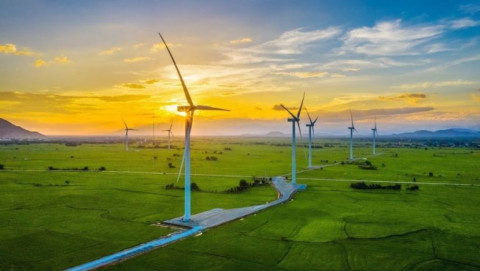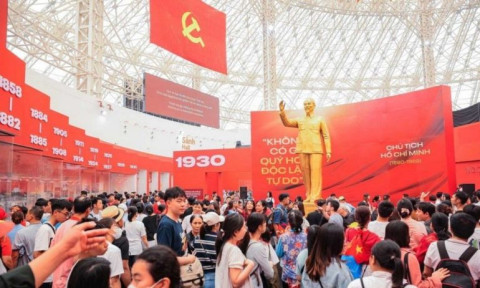Reducing greenhouse gas emissions and carbon market development to fulfill COP 26 commitments
- 19
- Socially Responsible Enterprise
- 16:27 05/11/2024
DNHN - Vietnam aims to reduce greenhouse gas (GHG) emissions and develop a carbon market, aligning with its COP 26 commitments. This requires close coordination and comprehensive solutions from all sectors and communities.
LTS: Business and Integration Magazine proudly presents an insightful article by Dr. Nguyễn Thị Liễu, Head of the Department of Mitigation and Climate Change Economics, Institute of Meteorology, Hydrology, and Climate Change, Ministry of Natural Resources and Environment. The article provides a deep dive into the challenges and solutions Vietnam faces in fulfilling its COP 26 commitments.
It highlights critical policy and legal insights regarding GHG reduction and emphasizes community involvement in transitioning toward a green and sustainable economy.
Solutions for greenhouse gas reduction and carbon market development in Vietnam
The greenhouse effect (GHG) is a natural phenomenon that traps heat in the lower atmosphere by absorbing and re-radiating long-wave radiation from the Earth’s surface through clouds and greenhouse gases (GHGs). These gases prevent heat from escaping, keeping Earth's temperature around 30°C higher than it would be otherwise, enabling life to thrive. According to the IPCC (2013), the greenhouse effect is essential for life on Earth to exist and prosper.
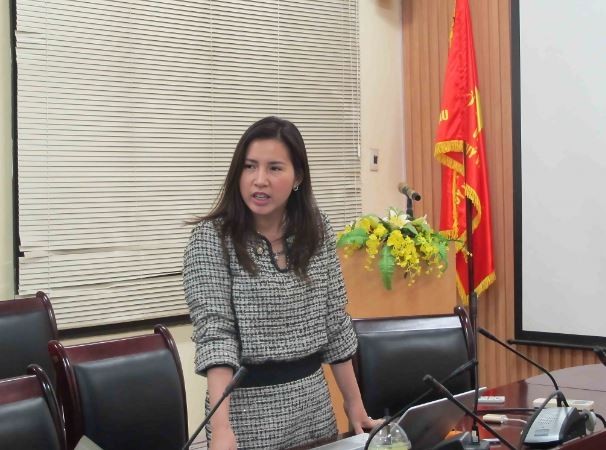
Key GHGs include carbon dioxide (CO2), nitrous oxide (N2O), methane (CH4), sulfur hexafluoride (SF6), ozone (O3), and water vapor (H2O). However, human activities, particularly in the industrial and transportation sectors, have increased these gases’ concentrations, leading to global warming with severe environmental and climatic impacts.
The carbon market originated from the Kyoto Protocol (1997) under the UNFCCC, establishing a trading system that allows countries to buy or sell greenhouse gas emission units. The goal is for countries to meet their emission limits as defined by the Protocol or other agreements. Since CO2 is the primary greenhouse gas, other gases are converted into "CO2 equivalent" units to facilitate tracking and management.
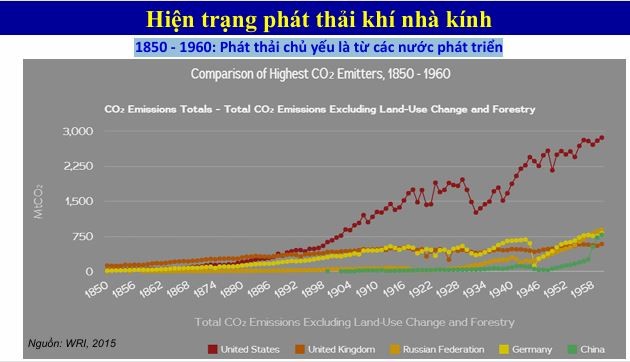
Carbon credits, also known as emissions credits, are tradable certifications in the carbon market. Each credit represents the right to emit one ton of CO2 or an equivalent GHG. According to the Environmental Protection Law, carbon credits are not only a commercial tool but also a critical solution in reducing greenhouse gas emissions.
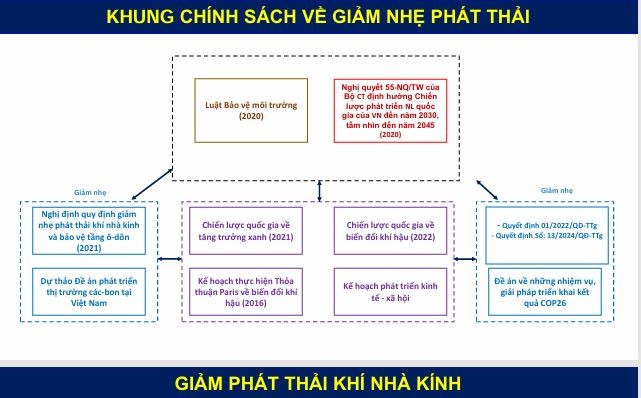
Vietnam, like many other countries, faces significant challenges in reducing GHG emissions. Rapid economic development, coupled with industrialization and urbanization, has led to increased emissions from various sources. Recent studies show that Vietnam’s total GHG emissions have risen significantly, especially from industries, transportation, and agriculture.
To meet its COP 26 commitments, Vietnam has set a 2030 target for reducing GHG emissions while promoting green and sustainable economic growth. The government has outlined a clear roadmap with specific measures to achieve these commitments, including building and developing a carbon market.

Achieving GHG reduction and carbon market development in Vietnam requires a clear roadmap and coordinated solutions. The government must implement encouraging policies, enabling businesses and individuals to participate in the carbon market. Furthermore, education and awareness-raising efforts on GHG emissions impacts are also crucial.
Establishing mechanisms for monitoring and assessing emissions activities ensures the serious implementation of commitments. Additionally, international cooperation and technology sharing are vital in helping Vietnam achieve sustainable development goals.
Reducing GHG emissions and developing the carbon market are essential parts of Vietnam’s economic development strategy. To successfully meet COP 26 commitments, collective efforts from all levels, sectors, and communities are needed to protect the environment and work towards a greener, more sustainable future.
From 1850 to 1960, GHG emissions were primarily produced by developed countries, contributing to global climate change. To address this, Vietnam has set out a roadmap for GHG reduction according to Article 91 of the Environmental Protection Law 2020, aiming to build a more sustainable economy. Emission reduction activities are tailored to the country’s conditions and comply with international commitments.

Towards the Net Zero Emissions Target, building a green and sustainable future
Enhancing the effectiveness of state management in GHG reduction is essential. One important basis for this goal is GHG inventory, identifying clear emissions sources across sectors such as energy, transportation, construction, industry, and waste. This not only raises awareness but also provides the necessary data for planning and tracking emissions reduction progress.
The GHG reduction roadmap is divided into two phases: from 2022 to 2025, Vietnam will focus on enhancing GHG inventory capacity without mandatory reduction targets. In the 2026–2030 phase, facilities will implement specific reduction solutions, and the carbon market will begin to operate. This will not only promote economic transformation but also create green investment opportunities for businesses.
The carbon market’s development will help shift investment models toward sustainability. By pricing carbon, Vietnam can reduce emissions efficiently and cost-effectively. Additionally, auctioning emissions quotas generates revenue for the budget, bringing considerable benefits such as improved air quality, green jobs, and forest protection. These efforts aim to reach net-zero emissions by 2050 and build a green and sustainable future for all.
The Emissions Trading System (ETS) is a proven solution for managing and reducing emissions, operating on a licensing principle where regulatory agencies issue quotas for permitted emissions levels. Through trading these quotas, businesses can flexibly adjust their operations to optimize emission costs.
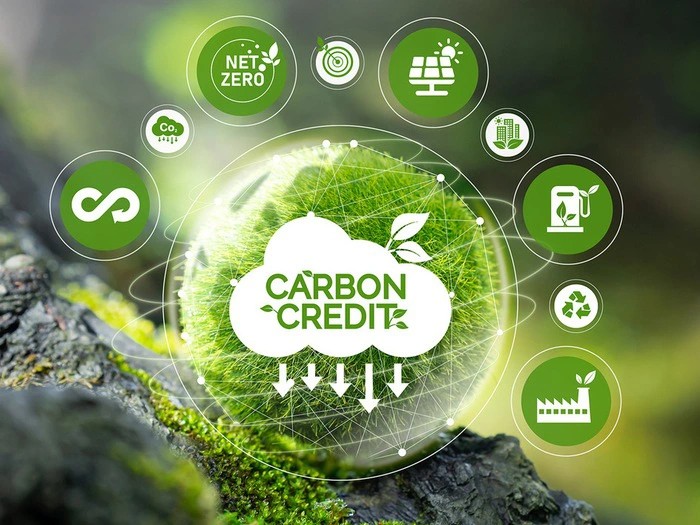
The ETS establishment process involves several crucial steps. First, it is necessary to identify clear emissions reduction goals, the role of ETS in environmental policies, and its interactions with other mechanisms. This analysis helps create a solid foundation for an efficient system.
Carbon taxes play a vital role in internalizing GHG emissions costs, motivating businesses to reduce emissions. By imposing a fixed price for each ton of emissions, carbon taxes encourage companies to invest in green technology and sustainable solutions, thus reducing environmental impacts.
The carbon credit mechanism allows recognizing efforts to reduce or absorb carbon from businesses. When a business reduces emissions below a defined baseline, it receives credits, creating a financial incentive for environmental protection measures.
Quota allocation in ETS can be implemented through various methods, including free allocation or auctioning. Allocation based on past emissions (grandfathering) ensures fairness, while auctions generate revenue for the government and incentivize companies to proactively reduce emissions.
Despite its benefits, ETS also faces certain challenges. Small businesses often struggle to participate in auctions or adapt to new regulations. Furthermore, maintaining transparency and fairness in quota allocation is essential for the system’s effective operation.
The carbon market is becoming a crucial part of global emissions reduction strategies. In Vietnam, with increasingly robust legal regulations, the carbon market has strong development potential. However, to meet set goals, active participation from both government and businesses, as well as international community support, is necessary.
Dr. Nguyễn Thị Liễu - Head of the Department of Mitigation and Climate Change Economics, Institute of Meteorology, Hydrology, and Climate Change, Ministry of Natural Resources and Environment
Related news
#environmental protection

What can be learned from VinFast's success after becoming the best-selling car brand in Vietnam?
VinFast's market-leading sales in Vietnam in September marked a major turning point, as a domestic electric vehicle brand outpaced international competitors.
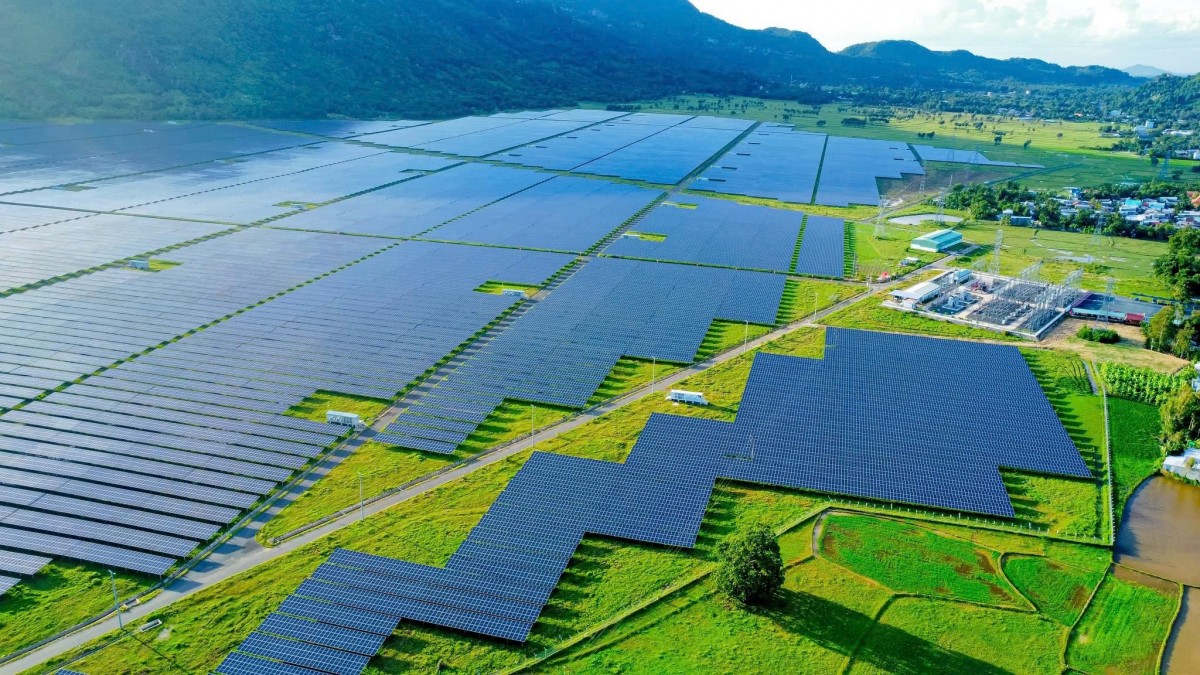
Nurturing life for the future with clean energy
Vietnam has just endured Typhoon No. 3, leaving behind a trail of destruction and loss that makes us all feel small against Mother Nature. It is time for a change, time to nurture and protect our living environment.
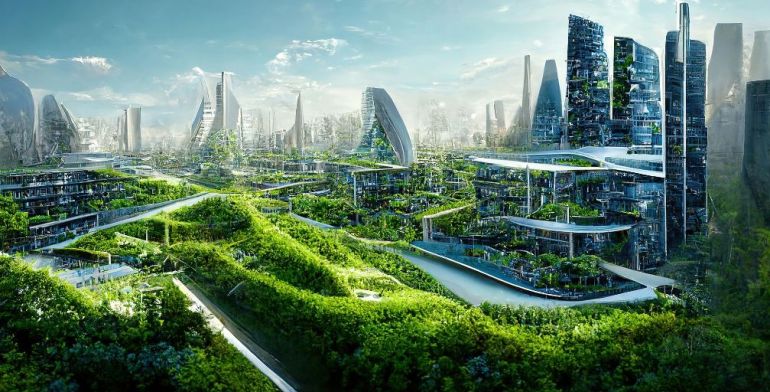
Practical applications of carbon credits in the economy. Part XXI:Carboncor Asphalt - An effective solution for Vietnam to achieve net zero emissions
Vietnam is actively implementing green construction solutions to achieve the goal of net zero emissions by 2050. These solutions reduce greenhouse gas emissions and support sustainable development in the construction industry.
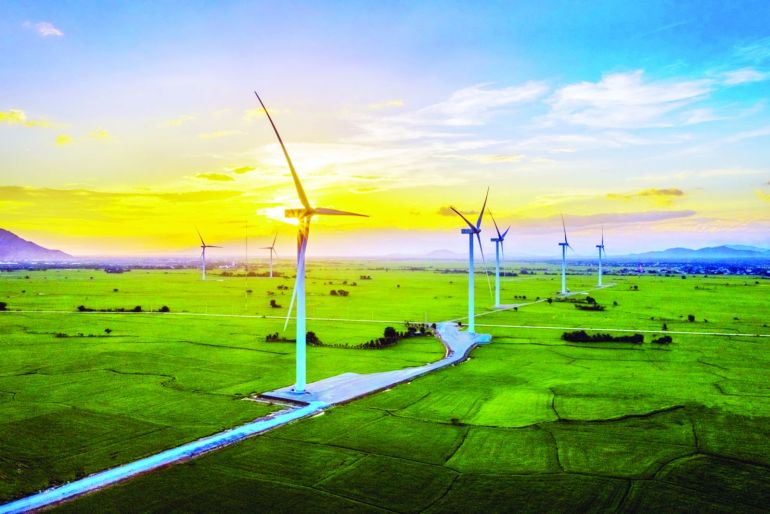
Practical applications of carbon credits in the economy. Part XI: Bridging policy and strategy for the carbon credit market
To develop the carbon credit market, the Government and businesses must improve cooperation and communication. The Government needs to provide clear policies, while businesses must adopt emission reduction strategies and leverage carbon credits.

Yen Bai: Implementing the plan to manage and eliminate ozone-depleting substances and greenhouse gases
The People's Committee of Yen Bai province has just issued document No. 3005/UBND-TNMT on the implementation of the National Plan for the management and elimination of ozone-depleting substances and controlled greenhouse gases.
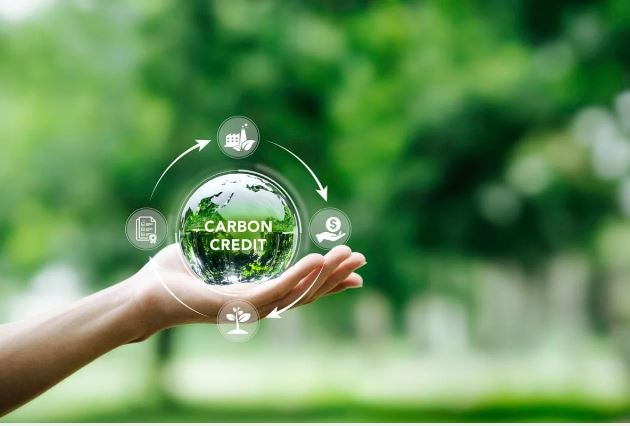
Practical applications of carbon credits in the economy. Part XIX: Training human resources - A strategic and urgent task for the carbon credit market
Training human resources for the carbon credit market is an urgent task that supports sustainable development. A skilled team of experts with project implementation skills, this leads to improved emission reduction and environmental protection.
Đọc thêm Socially Responsible Enterprise
When artists do business – livelihood is no poetry!
A series of indictments, arrests, and bankruptcies among artists has sounded a serious alarm.
Hanoi’s economy grows 7.92% in first nine months of 2025, FDI surges nearly threefold
Hanoi maintained robust growth momentum in the first nine months of 2025 with GRDP up 7.92% year-on-year, driven by strong services and construction sectors.
Vietnam’s strong gdp growth fails to ease labor market distress
As the year draws to a close, the pressing challenge for businesses and policymakers is how to rebuild worker morale, retain top talent, and stabilize employment amid lingering uncertainty.
Vietnam ramps up efforts to lift EU “Yellow Card” on Illegal fishing
Prime Minister Pham Minh Chinh has called for intensified and coordinated efforts to have the European Commission’s “yellow card” on Vietnam’s fisheries removed within this year.
Quang Tri calls for investment in wind power plant project worth over VND 1,100 billion
The People’s Committee of Quang Tri Province has officially announced the Hưng Bắc Wind Power Plant Project as part of its investment invitation portfolio.
Hanoi receives two million visitors during the four-day National Day holidays
From August 30 to September 2, Hanoi received around 2.08 million visitors during the four-day National Day holidays , three times higher than the figure in the same period last year, the municipal Department of Tourism reported.
Ca Mau gradually makes its mark on the national tourism map
By 2025, Ca Mau aims to attract 8.4 million visitors and achieve a total revenue exceeding 8,585 billion VND, contributing to the province's double-digit growth target.
UNDP Resident Representative hails Vietnam as an emerging economic powerhouse
Millions of people have been lifted out of poverty, hunger has been eliminated, and the economy has maintained consistent growth rates of over 6 per cent, UNDP Resident Representative in Vietnam Ramla Khalidi remarks.
Alpha Books Chairman Nguyen Canh Binh: The survival weapons of Vietnamese entrepreneurs in the age of AI.
Alpha Books Chairman Nguyen Canh Binh shares three essential lessons to ensure the survival and growth of Vietnamese entrepreneurs in the digital age: creativity, connection, and collective intelligence.
Mr. Le Viet Thang, CEO of 1Office: "Don’t use old solutions for new ai challenges"
As artificial intelligence (AI) reshapes the global technology landscape, Vietnam is taking decisive steps to establish a National AI Research and Development Center, alongside the National Data Center.






